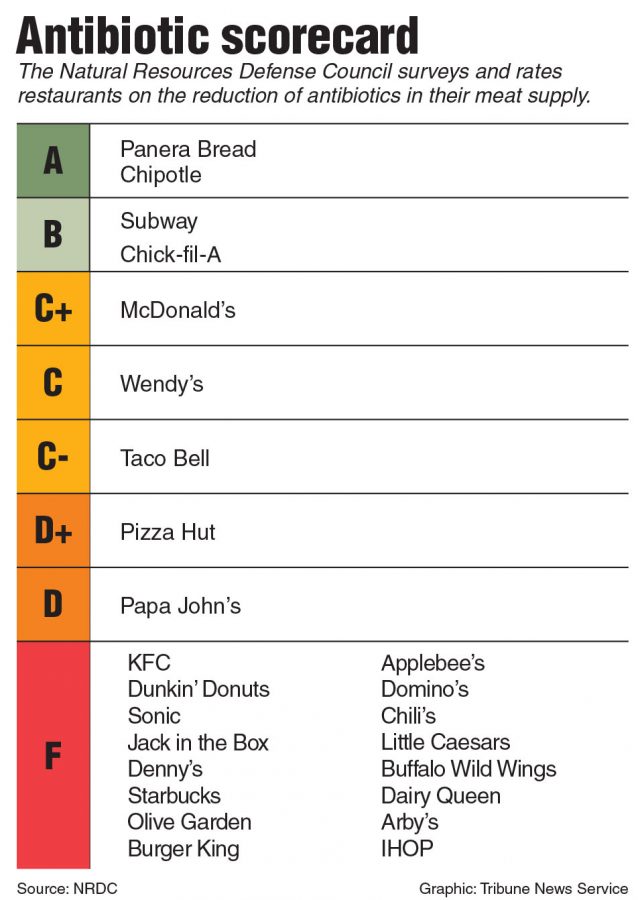Grading your favorite grub
Listed here are all of the letter grades for the top 25 fast food and “fast casual” restaurants in the U.S. Although 16 out of 25 restaurants received a failing grade, this is an improvement from last year. Keep in mind, the grade can be dependent on just on or on multiple available meat products.
September 27, 2016
Surely you have heard the stories that fast food restaurants do not use real meat. After all, the stories are true right? All the meat is processed, right? Wrong. Although that is how it used to be, fast food restaurants are making their meat “perfect” in a different way.
Conducted by six nonprofit activist organizations, a study, called Chain Reaction II, measured the amount of antibiotic use and the type of antibiotics used in the meat products at America’s top 25 fast food and “fast casual” restaurants.
For the second year straight, Chipotle Mexican Grill and Panera Bread (Saint Louis Bread Co.) landed a spot atop the leaderboard, both receiving letter grades of “A”. Basically, this result shows that both restaurants use no antibiotics.
“I am super glad that Chipotle got a high grade. I eat the so much and the food there always seemed fresh. I’m glad to know that it is,” said Jay Fields, 12.
Although a common belief is that all antibiotic-treated meat (to be consumed by humans) is bad, this is actually a common misconception. Not all antibiotics that are used have a harmful effect on humans.
Corporations that use these “neutral” antibiotics received anywhere between a “B” and a “D” letter grade, the grading criteria being quality of the product quality, product quantity and overall effects on humans and animals.
Restaurants receiving an “F” got their grade based on high usage of antibiotic or high harmfulness to humans and animals.
“I sure do hope that I don’t eat regularly at some of these “F” rated restaurants. I’d rather be healthy for a while than sick for even just a little bit,” said Adam Pelberg, 12.
The big problem with using antibiotics to raise the meat being served is that when humans consume the treated product, they also consume the antibiotic. By allowing the antibiotic to enter their bodies, humans increase the chances of not being able to cure a bacterial infection or sickness later in life.
“This actually makes sense to me. If you take medicine when you are not sick, it may not work for you when you actually need it. It confuses your body,” said Sydney Miller, 12.



![Mock Trial members from Gold and Green team last year pose for a picture in front of the OCLRE building in Columbus. "We all put in so much work [last] year. I know [this] year we’ll come back improved and ready to win!” said Ogunbodede.](https://shsleaf.org/wp-content/uploads/2025/10/IMG_4121-300x205.jpg)



